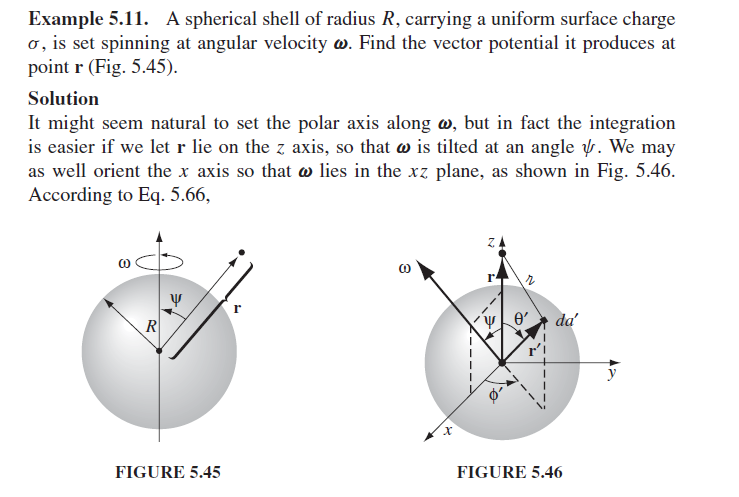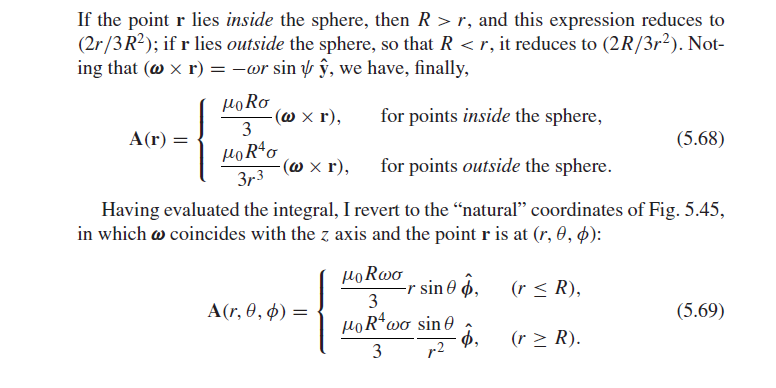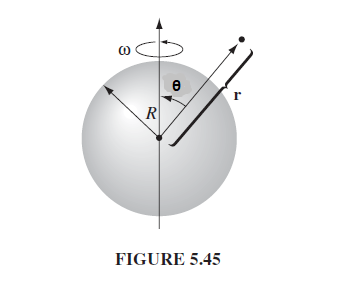I have done all the calculation in finding the vector potential leading up to the equation 5.68. But then Prof. Griffiths goes back to the original figure and mentions that the coordinate of the point $\mathbf{r}$ is $(r, \theta,\phi)$. And now I have a problem here. Because, we all know, that in spherical coordinate $\theta$ is the angle from the $\mathbf{z}$ axis and it remains constant even when the point rotates around the $\mathbf{z}$ axis. In the original figure $\theta$ actually would be $\psi$. But he doesn't use $\psi$ in the ultimate equation 5.69 rather goes on with $\theta$ which I am unable to get. Or is he just generalizing the result where the angle is $\theta$ instead of $\psi$?
What am I missing here in my reasoning?
Below are the relevant figures and equations.
EDIT: I think the first figure (5.45) should have been the following to match up with his explanations towards the end.



